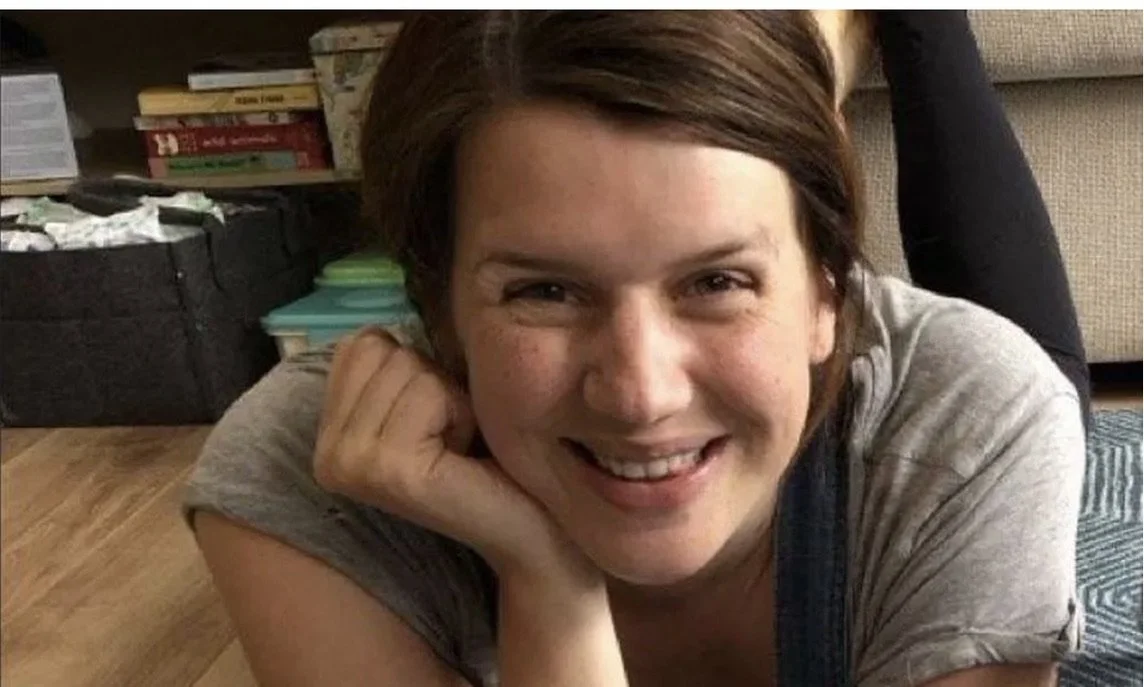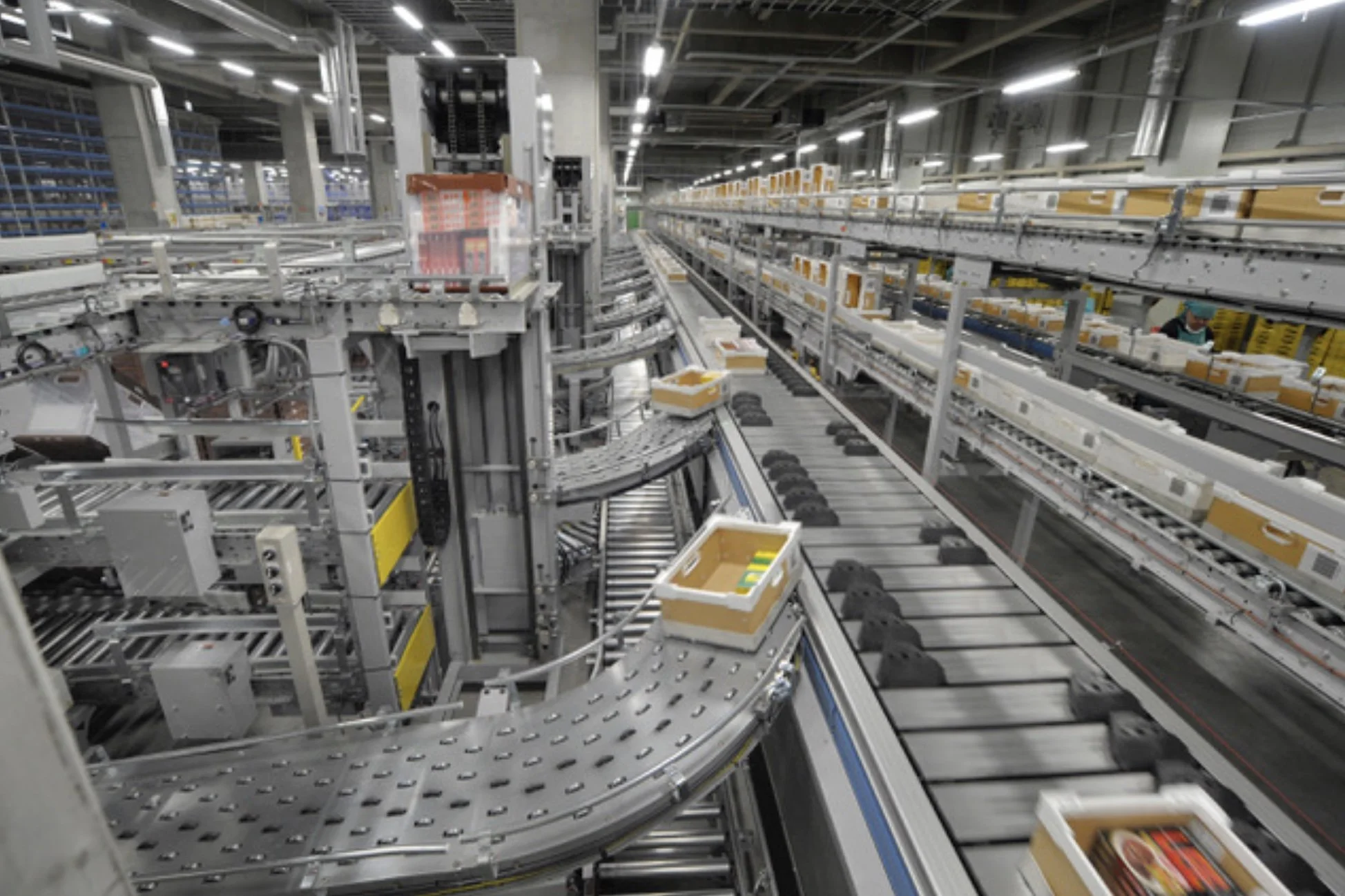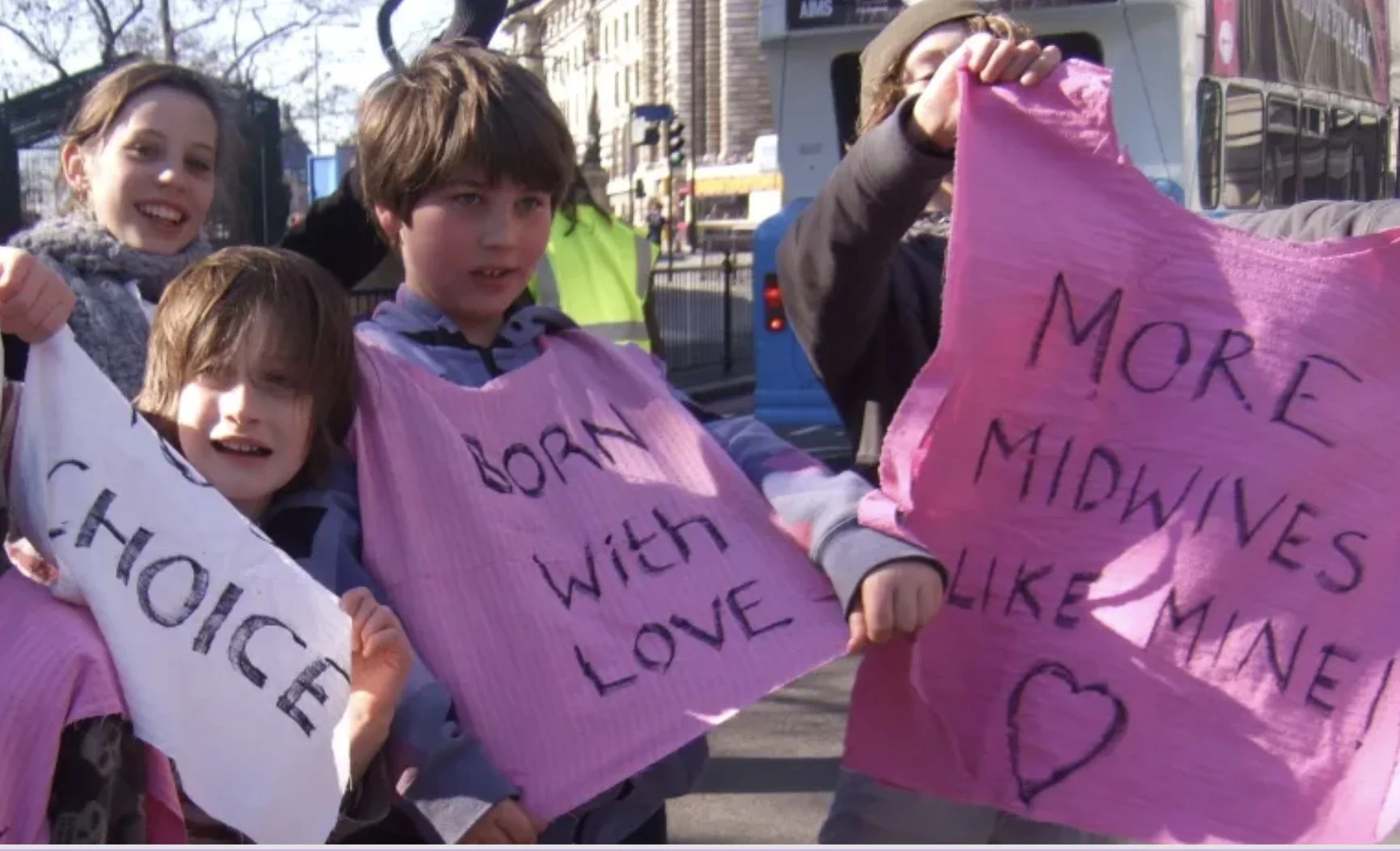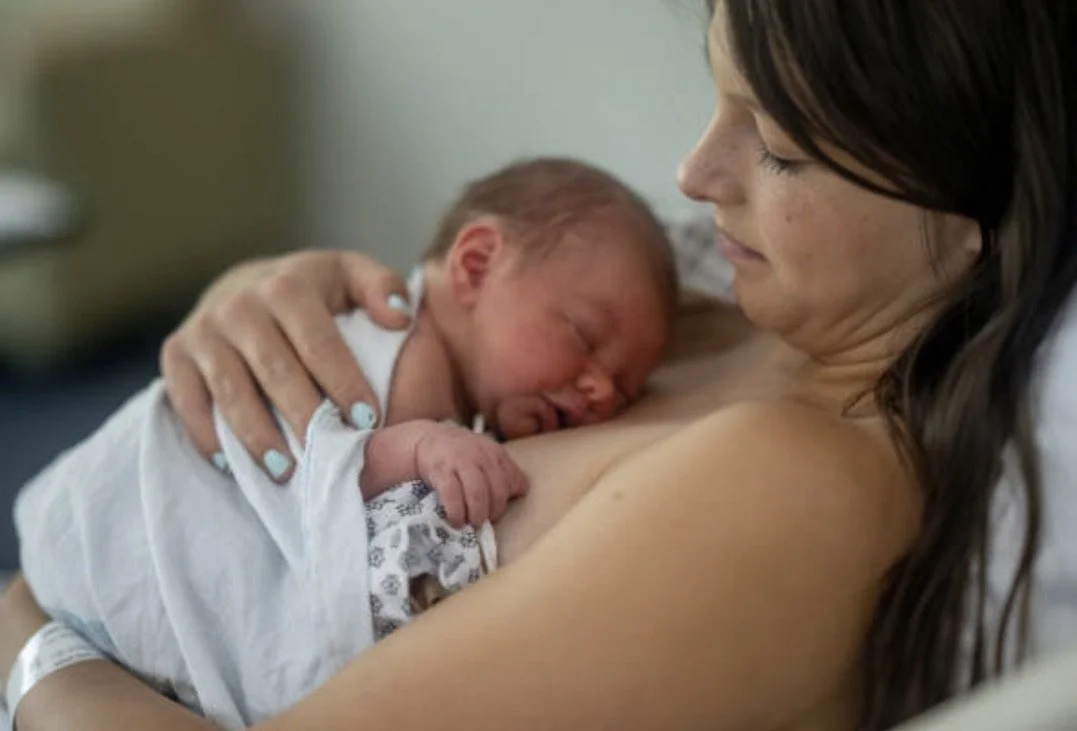Prestwich Home Birth Tragedy and How Lack of Continuity Costs Lives
The story of second time mother Jennifer Cahill
has been all over the news over the past couple of days,
with testimony from the Coroner
being shared and investigations still ongoing.
For everyone connected to the world of birth,
it’s a moment to pause
— to reflect, to grieve, and to search for meaning.
The Blame Game?
Much of the media coverage has focused on blame:
the mother,
for being reckless in her choices,
some point the finger at the midwives for their actions
or the Doctor who signed her off,
others may seek to blame the online world
But almost nobody has questioned the one element that underpins all of this:
THE SYSTEM ITSELF.
The lack of continuity.
Women entering NHS maternity care today are too often processed through a conveyor belt of rigid,
non-evidence-based guidelines.
Each step of their care depends on which professional happens to be on shift that day.
The midwives have no autonomy in this system
nobody respects their professional judgement
They simply enact actions and outcomes based on
the ‘rules’ of the system
and this is supposed to be safe?
This isn’t safety. It’s illusion.
Even here in the Forest of Dean,
where many women are fortunate to see familiar faces in pregnancy,
very few will have a known midwife by their side in labour.
This is unacceptable
Women deserve better
The UK are hailed as a leader in maternity
yet we have one of the worst stillbirth rates in the developed world,
second only to America.
Looking at how services are structured in North Manchester,
it appears Jennifer received no continuity of care during her pregnancy:
no named midwife she could trust to discuss her options,
a doctor she met only once
— with no relationship to her or the midwifery team —
who simply “signed her off” after she made her decision.
That decision was her right.
But she should never have had to make it in isolation.
Was Jennifer Reckless?
Hardly.
Jennifer, it seems had been traumatised from her previous birth.
Research shows that around
one in three women describe their birth as traumatic,
often not because of what happened medically,
but because of how they were treated
— ignored, coerced, or left without dignity
(BMC Pregnancy & Childbirth, 2017).
I only know what had been written in the papers
- which of course is not the full story.
But after hearing thousands of women’s experiences first-hand,
I can guess what her first birth might have included:
⚠️ A lack of respect,
⚠️ lack of privacy,
⚠️ coercion into a cascade of interventions
⚠️ a sense of loosing control
⚠️ Procedures done to her, not with her consent.
It appears Jennifer did her research and realised that what happened in hospital
was neither necessary nor without consequence.
She may have recognised that the trauma she carried was not
“bad luck”
but the product of a broken system.
And she was right.
It’s well documented that episiotomies and postpartum haemorrhages
are far more likely to occur in planned hospital births
(Planned Home Birth: Benefits, Risks, and Opportunities, PMC;
Comparing the Odds of Postpartum Haemorrhage
in Planned Home Birth Against Planned Hospital Birth, PubMed).
nb. when looking at outcomes, births are grouped into ‘planned’ or ‘intended’ place of birth, rather than actual place of birth. So we know that just by ‘planning’ a home birth - the risk of many of the interventions such as augmentation (speeding up with drugs) of labour, surgical deliveries, and postpartum haemorrhages are hugely reduced.
Most of these studies focus on women classed as low-risk for research purposes, but that doesn’t make the findings irrelevant to mothers with additional risk factors. Understanding how place of birth affects intervention rates and outcomes remains essential for all women making informed decisions about where to give birth.
So Jennifer, quite rightly,
realised she could not trust the NHS with her care.
She could not trust that doctors and midwives
in hospital would respect her choices or safeguard her vulnerability.
Yet she still wanted support
— skilled, compassionate,
professional support.
She believed that planning a home birth would give her that: two midwives, one-to-one care, and a calm environment.
It was a logical and courageous decision for a woman seeking safety after trauma.
What she couldn’t have known was that the system itself would fail her again.
In this fractured model of maternity care, her case was never properly risk-assessed.
No coherent plan was made.
She had no known midwives
— no one who understood her history or her fears.
Leadership teams were juggling unsafe rotas like Russian roulette,
and no one personally checked the emergency equipment.
When labour began, the midwives who attended were strangers.
They hadn’t seen her notes.
They hadn’t prepared together or rehearsed scenarios.
Jennifer was right not to trust them
— not because they were bad midwives,
but because they were working in a system that had already set them up to fail.
She was in an impossible situation.
Was the Doctor to Blame?
Perhaps — partly.
Who knows exactly how that one appointment went?
But why was there no communication with the midwives afterwards?
It’s almost unheard of for that to happen
— and yet, somehow, that’s become normal.
Maternity policies often speak of
“the team around the woman”
— a lovely phrase on paper, borrowed from NHS models of joined-up care
and central to the Better Births maternity transformation plan
(NHS England, 2016).
In reality,
what most women encounter is a scattering of disconnected professionals,
each following their own flowchart.
Even if that system worked perfectly,
it still misses the point:
women, babies, doctors and midwives are people
— not processes.
Pregnancy and birth deserve time,
respect, and compassion
— not box-ticking.
Doctors are often accused of frightening women into agreeing to interventions
rather than having nuanced,
informed conversations about risk.
Yet sometimes, when faced with a well-informed,
confident woman, they do the opposite
— they say nothing at all.
Both approaches insult women’s intelligence.
Still, women keep going to these appointments,
hoping
— often against the odds —
to be treated with the respect they deserve.
Were the Midwives to blame?
Again — perhaps, in part.
But let’s be honest:
midwives are working within a system that makes it almost impossible
to do their jobs safely.
They are under-staffed, over-stretched, and bound by protocols that value paperwork over presence.
A midwife can’t build trust with a woman she’s never met.
She can’t provide safe care while worrying about being disciplined
for using her professional judgment.
When care is this fragmented, no one can succeed.
The truth is,
the failures that killed Jennifer and her baby were not the result of one doctor’s signature
or one midwife’s mistake
— they were the predictable outcome of a
disjointed system with no continuity of care.
Until that changes,
every professional involved is set up to fail
— and women and babies will keep paying the price.
Midwifery in Crisis
Midwifery in the UK
— and much of the world, if we’re honest —
is in crisis.
There simply aren’t enough midwives staying registered.
Many are leaving the profession or de-registering altogether.
Why?
Because the system itself is broken.
⛔ Terrible working conditions
⛔ Inadequate pay
⛔ No trust in professional judgement
⛔ Loss of skills through over-medicalisation
⛔ Bullying, fear, and burnout
⛔️ Low continuity & job satisfaction
This is not about pointing the finger at midwives.
It’s about painting a picture of an impossible system
— one that drives good people out and leaves those who remain frightened,
unsupported, and increasingly de-skilled.
Midwives are now afraid to attend births.
Reported quote from Midwife giving testimony at Tribunal (as covered in public news reports)
….and unable to raise concerns about their own lack of skills and experience
Reported quote from Midwife giving testimony at Tribunal (as covered in public news reports)
The Supervisors of Midwives (SoMs)
— the experienced mentors
who once supported midwives and upheld safety standards —
were abolished in 2017.
They were replaced by Professional Midwifery Advocates (PMAs)
under the A-EQUIP model (NHS England, 2017).
On paper, PMAs were meant to provide reflective supervision and guidance.
In practice,
many midwives say they no longer have access to the same level of experienced,
independent mentorship that the SoM system provided.
So when a midwife is worried about her competence,
or equipment safety,
or a birth that feels outside her comfort zone,
she often has nowhere to go.
A Supervisor of Midwives could have offered confidential advice,
oversight, and reassurance.
They could have intervened early
— mentoring staff,
checking readiness,
and making sure that mothers and babies were safe.
Without that safety net, everyone
— mothers, babies, and midwives —
is left adrift.
Independent Midwifery & Caseload Teams
Independent Midwives offer the GOLD STANDARD of care to women.
From booking in visit, to 6 weeks, often more postpartum.
They are skilled, clinically trained, and registered professionals,
experienced in home birth and continuity of care.
So why aren’t they being used more widely to strengthen the NHS?
Local Trusts could easily bring in independent midwives
under NHS insurance when their own staff feel out of their depth
— for example, during breech births, VBACs,
or other complex home births where additional experience is needed.
When this happens,
an NHS midwife can work alongside the independent midwife,
learning vital hands-on skills and confidence for the future.
1:1 Autonomous Midwifery care is the safest maternity care available.
Caseloading models
— where women are supported by the same small team
throughout pregnancy, birth, and postnatal care —
have repeatedly shown better outcomes,
higher satisfaction, and fewer interventions.
These models have been implemented both within and outside the NHS.
But time and again, they’ve been shut down
— despite outstanding safety records and glowing feedback from women —
often due to bureaucracy, mistrust, or institutional resistance to female autonomy.
What remains are fragmented,
depersonalised systems that treat pregnancy as a process to be managed,
rather than a relationship to be nurtured.
I realise, of course, that some readers
— or more scarily, even officials —
will look at Jennifer’s story and conclude that
women shouldn’t be allowed to make “reckless” choices.
But who decides what counts as reckless?
What about when you are that woman
— strapped down to a surgical bed against your will,
told it’s “for your own good”?
That may sound extreme,
but it happens.
It happens in hospitals across the world,
and even in the United States it’s alarmingly common.
That is not a direction we want to go.
Here in the UK,
our Human Rights protect us from being forced to give birth anywhere we don’t want to.
Those rights exist for a reason
— because coercion,
even when dressed up as “care,”
is still coercion.
What we are lacking is not compliance from women,
but high-quality, personalised maternity services.
We need trained, skilled, and confident midwifery support,
rooted in respect and relationship.
And it is infuriating to know that this is being deliberately withheld from us.
It is completely within the remit of every NHS Trust
to bring in experienced midwives from outside
when internal teams lack the skills or confidence
to manage complex home births safely.
This isn’t about ideology — it’s about safety, dignity, and trust
The Cost of Getting It Wrong
It’s not only unsafe — it’s uneconomical.
I remember hearing years ago that a home birth cost the NHS around £2–3 k,
a forceps birth in theatre £7–8 k,
and a caesarean section £12-15 k.
While I couldn’t find a modern NHS source confirming those exact figures,
research continues to show that
planned home and midwife-led births save the NHS money.
The Birthplace in England cost-effectiveness study
found that planned home births cost about £780 per woman,
compared to £1,142 in obstetric units
— around £367 less on average.
Another UK analysis estimated that home births save about £310
per birth compared with consultant-led hospital care.
These are short-term figures
— they don’t include the cost of treating postnatal depression, birth trauma,
or the long-term consequences of disrupted bonding and lost breastfeeding.
When we add in those downstream effects
— the increased rates of infant illness, eczema, asthma, and the cost of mental-health support —
the financial argument for investing in continuity and caseloading becomes overwhelming.
By funding skilled, relationship-based midwifery,
we don’t just save lives — we save OUR NHS millions.
Beyond the Flow Chart
Birth isn’t just a clinical event or a process to be managed.
It can’t be reduced to flow charts, tick boxes, or protocols.
Birth is a transformation
— the birthing of a mother as well as a child.
An important rite of passage, deserving of time, tenderness, and trust.
Until we honour that truth
— that birth is both physiological and profoundly human —
no amount of policy or protocol will fix what’s broken.
So let’s imagine what could have been…
The Impact of Fear
We will never know exactly how Jennifer’s care unfolded
— what was said, what was missed, or how the atmosphere changed once the midwives arrived.
But one thing seems clear:
there was fear in that room.
And fear itself is a risk factor in birth.
It isn’t just an emotion; it’s a physiological state.
When a woman feels afraid, her body releases adrenaline
— the fight-or-flight hormone.
Adrenaline constricts blood vessels,
reducing oxygen flow to the uterus and placenta.
It slows labour, tightens the pelvic muscles, and makes it harder for the baby to rotate into an optimal position.
Fear can turn a straightforward labour into a difficult one
— not because the woman’s body has failed,
but because her environment has.
Of course, some labours are complex or unpredictable no matter what.
But when fear and disconnection enter the room, everything becomes harder.
And in Jennifer’s case, the midwives themselves were also afraid
— not of her,
but of a system that had left them undertrained and unsupported.
They were doing their best, but they were not equipped to deal with complications in that setting.
That is not their fault.
It is the fault of the system that abandoned them — and her.
What Continuity Could Look Like
Let’s say Jennifer had been booked with a highly skilled and experienced midwife,
part of an NHS Caseload Team just like The Albany
— let’s call her midwife Sue.
Sue would have been with Jennifer from early pregnancy
through to those first weeks after birth.
They would have met regularly, building trust and understanding.
Jennifer had Sue’s mobile number and could call or text anytime —
for reassurance, for guidance, or just to be heard.
Appointments might have taken place in a calm community space
— or at home —
where they could talk openly about Jennifer’s last birth,
her risk factors, and her hopes for this one.
Sue didn’t just tick boxes
— she listened.
She helped Jennifer understand how her body works
and how she could support it:
through diet, rest, gentle movement, and reducing stress.
That kind of care changes everything.
As their relationship grew, Jennifer’s confidence returned.
She felt calm and safe
— and her body responded.
Her blood pressure stayed stable,
her hormones balanced,
and her placenta functioned optimally.
Because Sue knew Jennifer’s history of blood loss,
she arranged a meeting with a trusted obstetrician
— let’s call her Dr X.
Sue and Dr X already had a strong working relationship.
They met regularly to discuss the women in Sue’s caseload
who had additional risk factors.
Together,
they reviewed Jennifer’s case,
creating a plan that balanced professional judgement with Jennifer’s wishes.
Jennifer came to trust Dr X too.
She knew that if a transfer became necessary,
she would be respected — and Sue would stay with her.
When labour began,
there were no strangers at the door.
No fear.
Just Sue
— calm, confident, and competent.
She carried out her checks quietly and respectfully,
never breaking Jennifer’s rhythm or focus.
There were no interruptions,
no unnecessary forms,
no need for small talk.
The room was dimly lit, warm, and peaceful.
The air was filled with trust.
Sue knew her equipment was checked and ready.
Her second midwife was someone she knew well
— equally skilled and dependable.
If complications arose,
Sue and her colleague were prepared.
Their quick, coordinated actions made the difference.
In this version of events, maybe everything would have gone smoothly.
Maybe Jennifer would have given birth to her baby safely at home.
Or maybe a transfer would still have been needed
— but one made calmly,
with Sue at her side,
ensuring continuity, safety, and dignity.
Either way, this story would almost certainly have ended differently.
Because when women have continuity of care, everything changes — outcomes, trust, and lives.
And maybe — just maybe —
even with all that care,
the outcome would have been the same.
We can’t ever know for certain.
But here’s what would have been different:
The team would have known that every risk had been discussed,
every plan made,
and that Jennifer and her baby had been given the best possible chance.
That’s what continuity does.
It builds trust, competence, and calm.
Because when women have continuity of care:
fewer babies die,
fewer caesareans are needed,
fewer epidurals are requested,
fewer babies are born prematurely,
and rates of pre-eclampsia and postnatal depression are lower.
Continuity saves lives
— and it restores dignity.
(Supported by the Cochrane Review on Midwife-Led Continuity of Care Models, Sandall et al., 2016)
So when birthkeepers, doulas, and mothers express their distrust in
“the system”,
it isn’t an abstract mistrust.
It’s a direct response to the very system that failed Jennifer
— and continues to fail too many others.
Real safety isn’t found in flowcharts or forms.
It’s found in relationships
— in the quiet confidence between a woman and the midwife she knows and trusts.
Many women are now seeking that safety outside the system:
hiring independent midwives,
caseload teams,
or doulas who can offer the continuity that the NHS has lost.
Others, heartbroken or fearful,
take full responsibility for their own care
— not because they reject support,
but because they cannot find it.
These are not reckless choices.
They are rational responses to a system that has stopped listening.
Because the calm, trusting environment of a well-supported home birth isn’t just comforting
— it’s physiological safety.
Low lights help labour progress.
Privacy keeps adrenaline low and oxytocin flowing.
Confidence and familiarity protect both mother and baby.
It is devastating when a woman dies in childbirth
— especially when the signs of failure were written all over the system long before her labour began.
But the answer is not to strip women of autonomy
or force them into medical units against their will.
The answer is to rebuild a maternity system where women know their midwives,
midwives know their limits,
and everyone works together from trust
— not fear.
What Could Jennifer Have Done Differently?
Jennifer did what countless women do when they’ve been traumatised by a system that never listened.
She tried to protect herself and her baby the only way she knew how
— by seeking safety, privacy, and control.
She shouldn’t have had to buy trust,
or gamble on the luck of the draw,
midwife roulette..
She should have been met by a midwife she knew,
within a system that valued her as an individual.
When continuity is lost,
women are forced into impossible decisions
— between fear of the hospital and fear of being alone.
That’s not choice.
That’s abandonment disguised as care.
And perhaps the cruellest irony is this:
we live in a culture where families will spend thousands
on cots, prams, nursery décor, and baby showers
— but not on the one thing that actually keeps mothers and babies safe:
skilled, continuous care.
That’s not their fault either.
It’s what they’ve been sold
— a consumer version of motherhood,
rather than a supported one.
The Real Reform We Need
Jennifer’s death was not the result of one reckless decision, one doctor, or one midwife.
It was the result of a maternity system that has forgotten what safety truly means.
Real safety is relational.
It lives in trust, skill, and continuity
— not in policies, protocols, or fear.
Until every woman has access to a midwife she knows and trusts,
and every midwife feels confident, supported,
and valued, these tragedies will keep happening.
It’s time to rebuild maternity care from the ground up —
not around systems,
but around women, midwives, and love.












